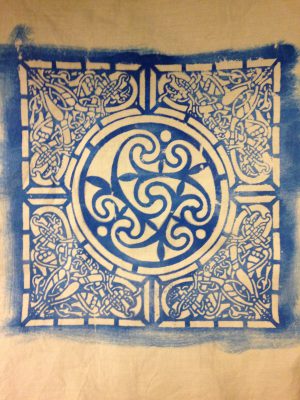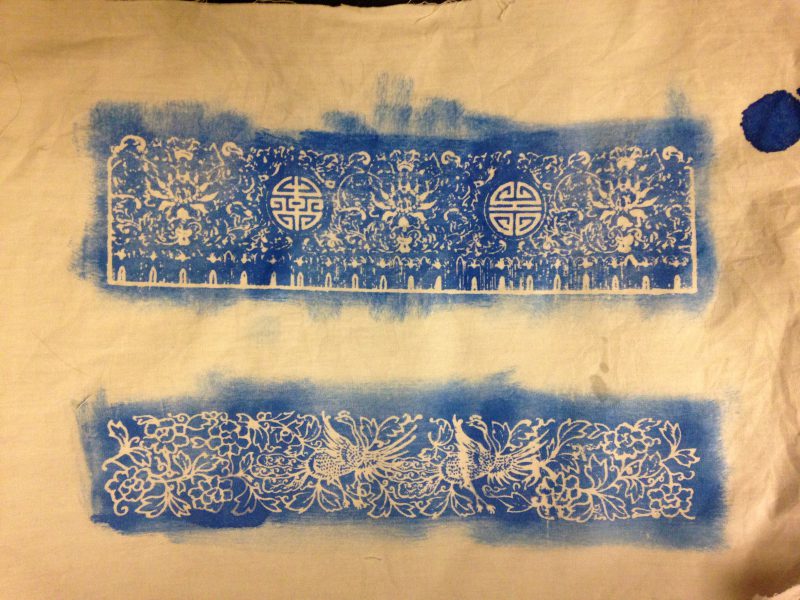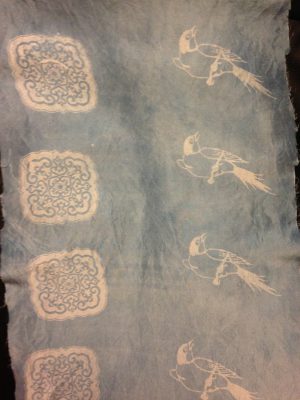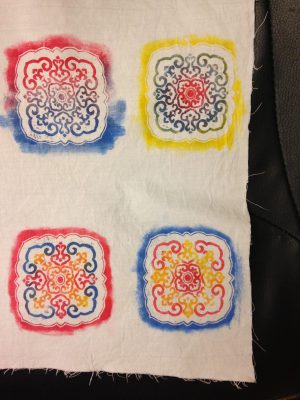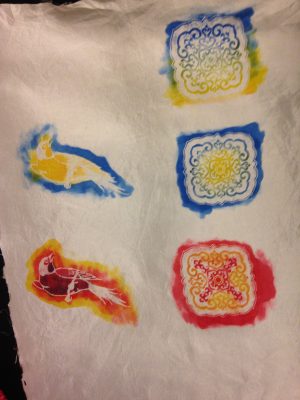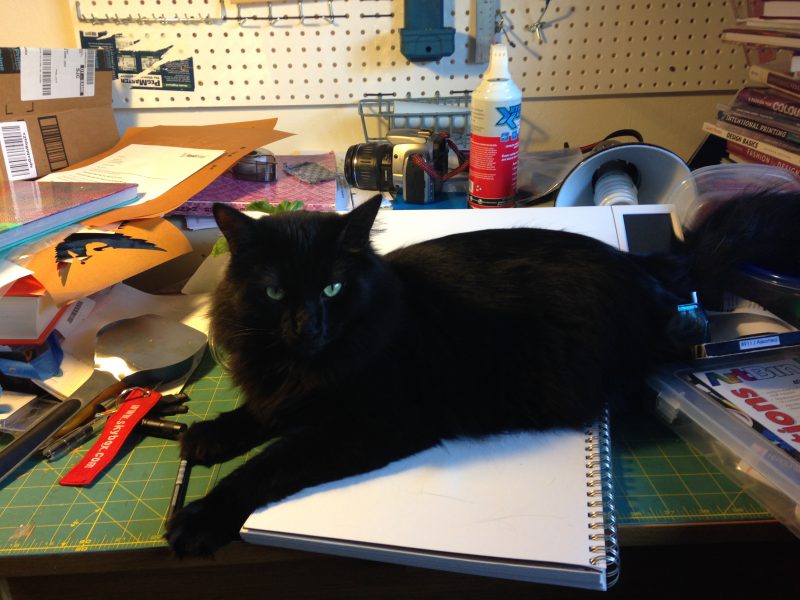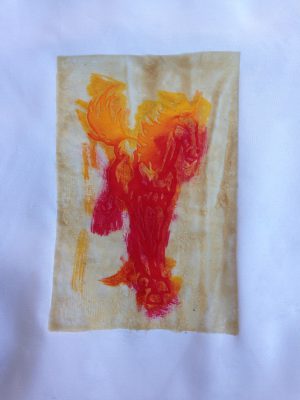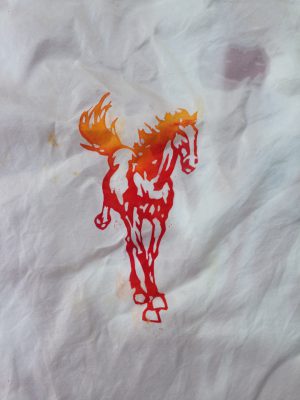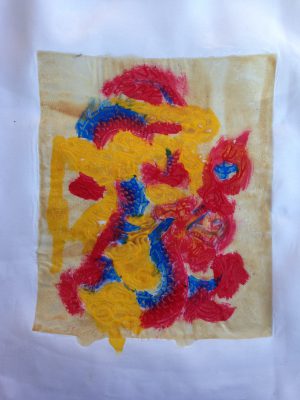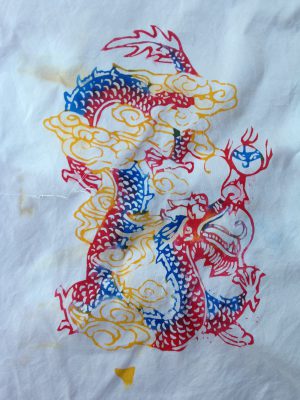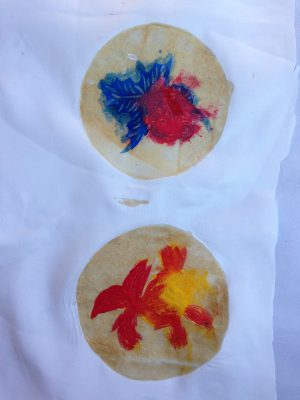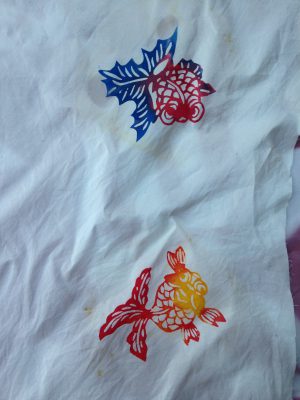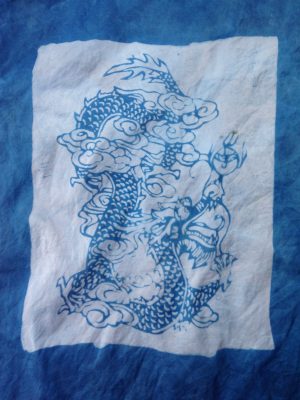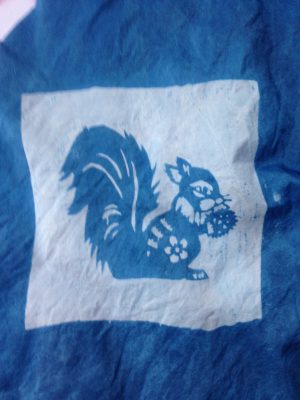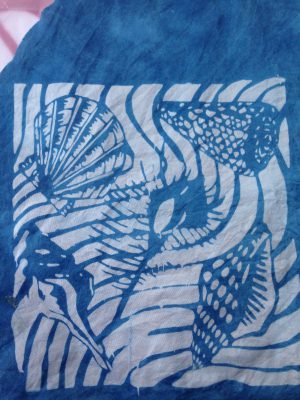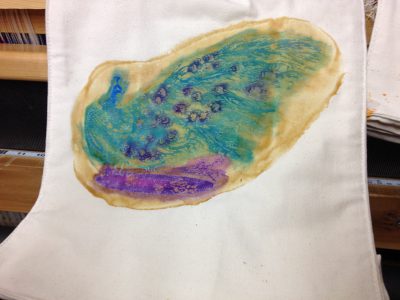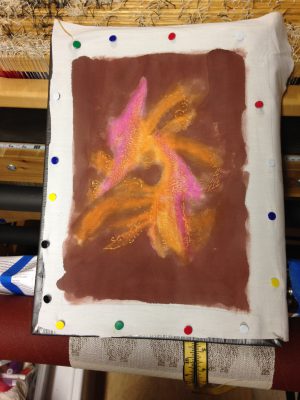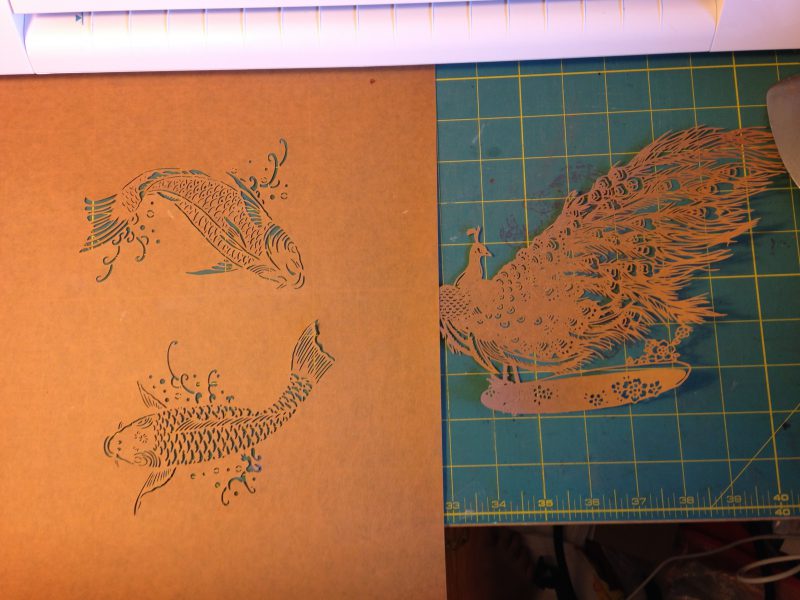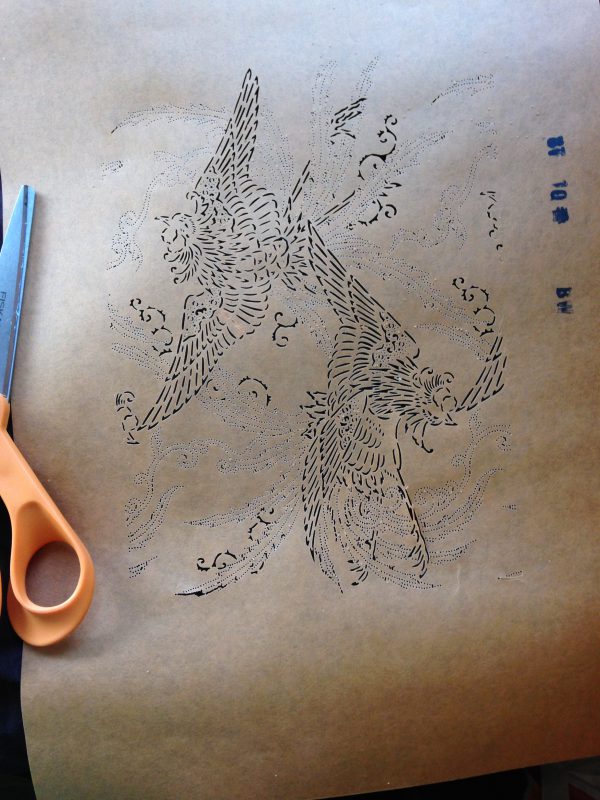I’m heading off to the airport in a few hours, visiting family for two weeks. The phoenix is accompanying me, so I can work on embellishments while I’m traveling. In fact, it has its own suitcase! as there is a lot to bring: the phoenix, the sample version, the embellishments, the scroll frame on which to stretch the phoenix, a table stand for the scroll frame – the list goes on. But I am short on time, as the piece needs to be completed (or complete enough to photograph) by February 1, so I have only six weeks to finish it. And I am traveling for three of those weeks! So the phoenix is coming with me.
What embellishments, and where? Well, here they are in a big untidy heap:
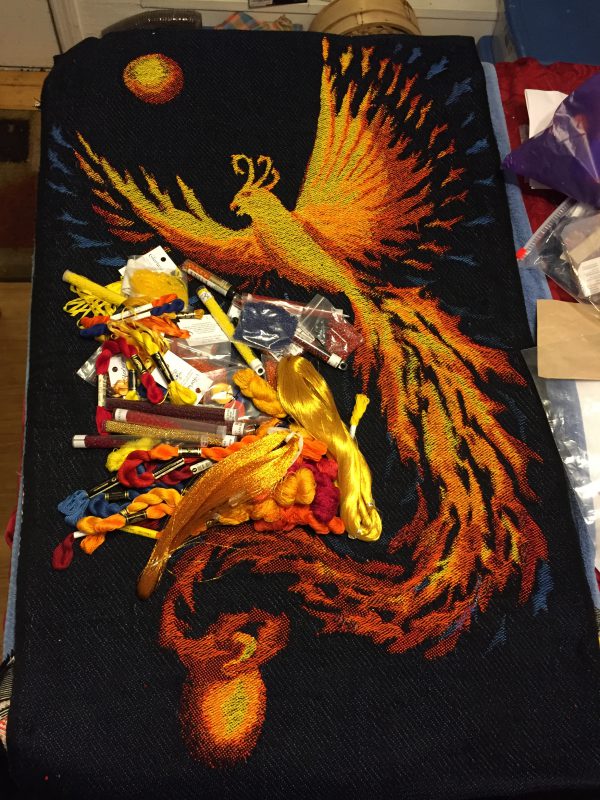
Metallic threads (some made with real gold!), silk ribbon, perle cotton, silk embroidery floss, skeins of 30/2 silk (hand-dyed by me), and a ton of size 6 seed beads, mostly from my mother’s stash. (She was very interested in lapidary, beading, and jewelry-making generally.)
Here’s a more organized view of the embroidery threads, showing the color palette:
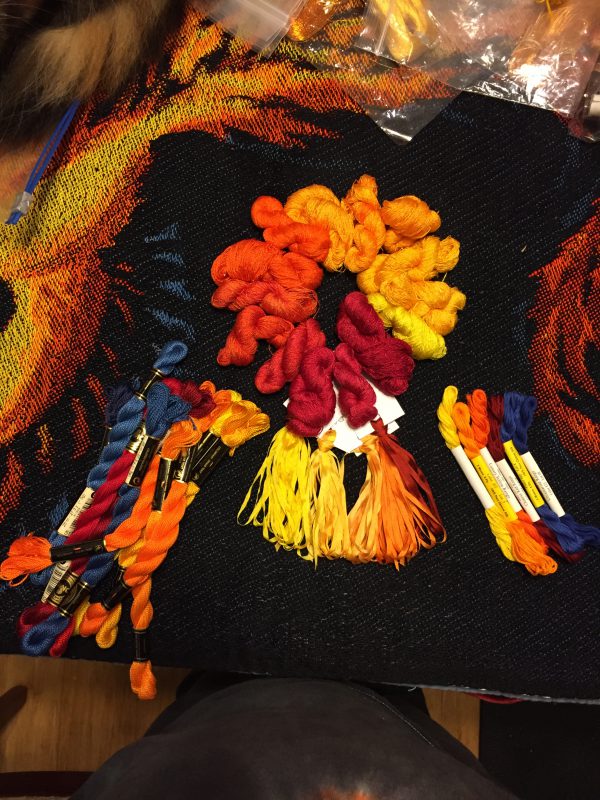
And, because everything is better with cats (at least according to the cats!), here are the usual photobombers:
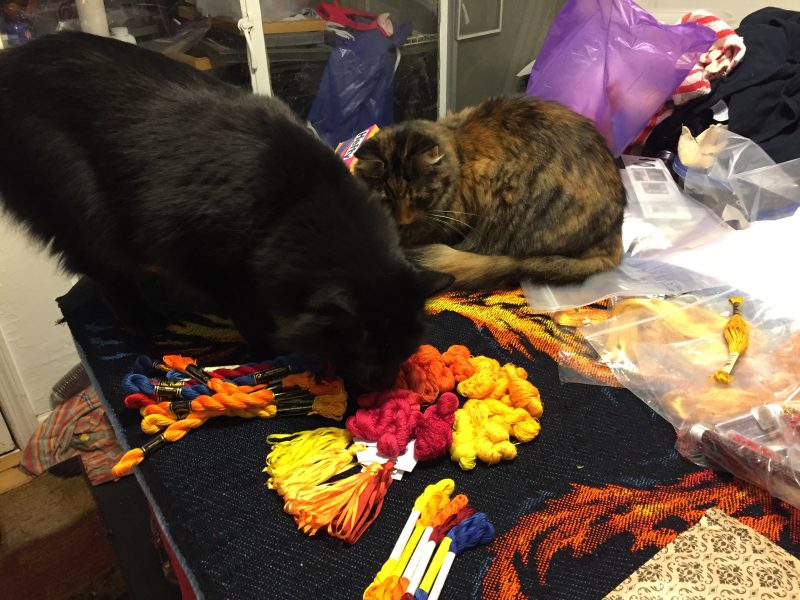
Now, what am I planning to do with all those embellishments?
First, I plan to embroider the entire body and head, to add details and also to give the body more opacity, which will emphasize its role as the focal point for the piece. You can see in this photo that the body appears somewhat translucent, especially in the spots where only the yellow weft is on top. Where there is only one weft on top, the coverage isn’t as good, so the black warp shows through more. The black also turns the yellow a bit greenish (black + yellow = olive), which I don’t like. (I deliberately used a golden yellow in hopes of staving off the green cast, but apparently I didn’t go far enough.)
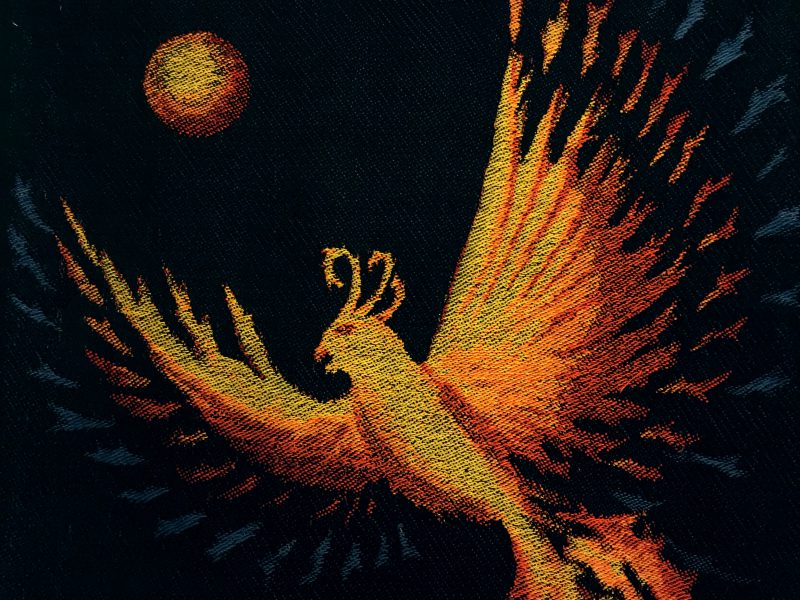
Anyway, since the head and body are the focal point for the piece, they need to be more opaque and more detailed. So I’ll likely use a shaded satin stitch for the body (so I can have more subtle shading), with bits of metallic thread to add highlights. On the head, I’ll use a shaded satin stitch as well, but add more metallic thread and also outline the eyes and beak with different colors. The crest feathers will get metallic threads and some bright yellow/orange beads.
I also plan to extend some satin stitches out to the wings, to avoid a big jump in texture/appearance from the body to the wings. The wings will also get some metallic threads and possibly a little bit of embroidery to emphasize the upper edges of the feathers. I will likely add some beads – yellow/red/orange in the outer feathers, and blue/black in the blue areas. In the left-hand black area between wings and feathers, I’ll add some blue/black beads (they are sapphire around a black core), expanding out from the blue feathers in the wing. That will add a bit of subtle motion to the space, so it isn’t quite so empty, without drawing attention from the phoenix.
Here’s the entire phoenix again, so you can see what I’m talking about. The blue/black beads will go in the space on lower left, between the blue feathers and the tail.
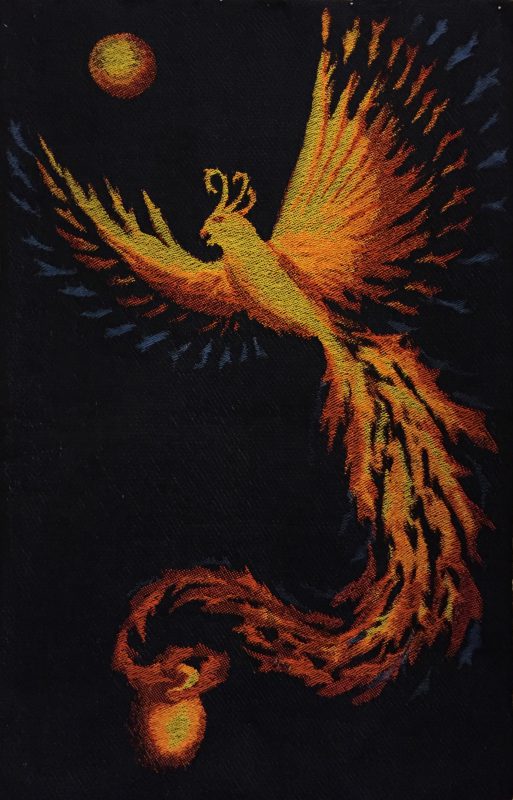
In the tail, I plan to outline a few of the feathers and embroider a few feathers to give the tail more dimensionality. There are two layers of feathers in the tail, which is clear in the digital painting but not in the woven cloth. I’m not quite sure how to outline the top feathers without losing the feeling of transparency at the feather edges – that will take some experimenting. I also plan to add a little glitter via the metallic threads, tapering off as I reach the end of the tail.
I’m planning to outline the moon and the urn to make them more solid, and also to embroider my mother’s birth and death dates on the urn, to make it more clearly a cremation urn.
And that’s it for now. I’m starting with a test piece, both to test out my embellishment plans and to practice my embroidery skills before starting on the final piece. Doing the test piece and the real piece in six weeks will be a real stretch, especially while traveling, but I think I can get it done.
